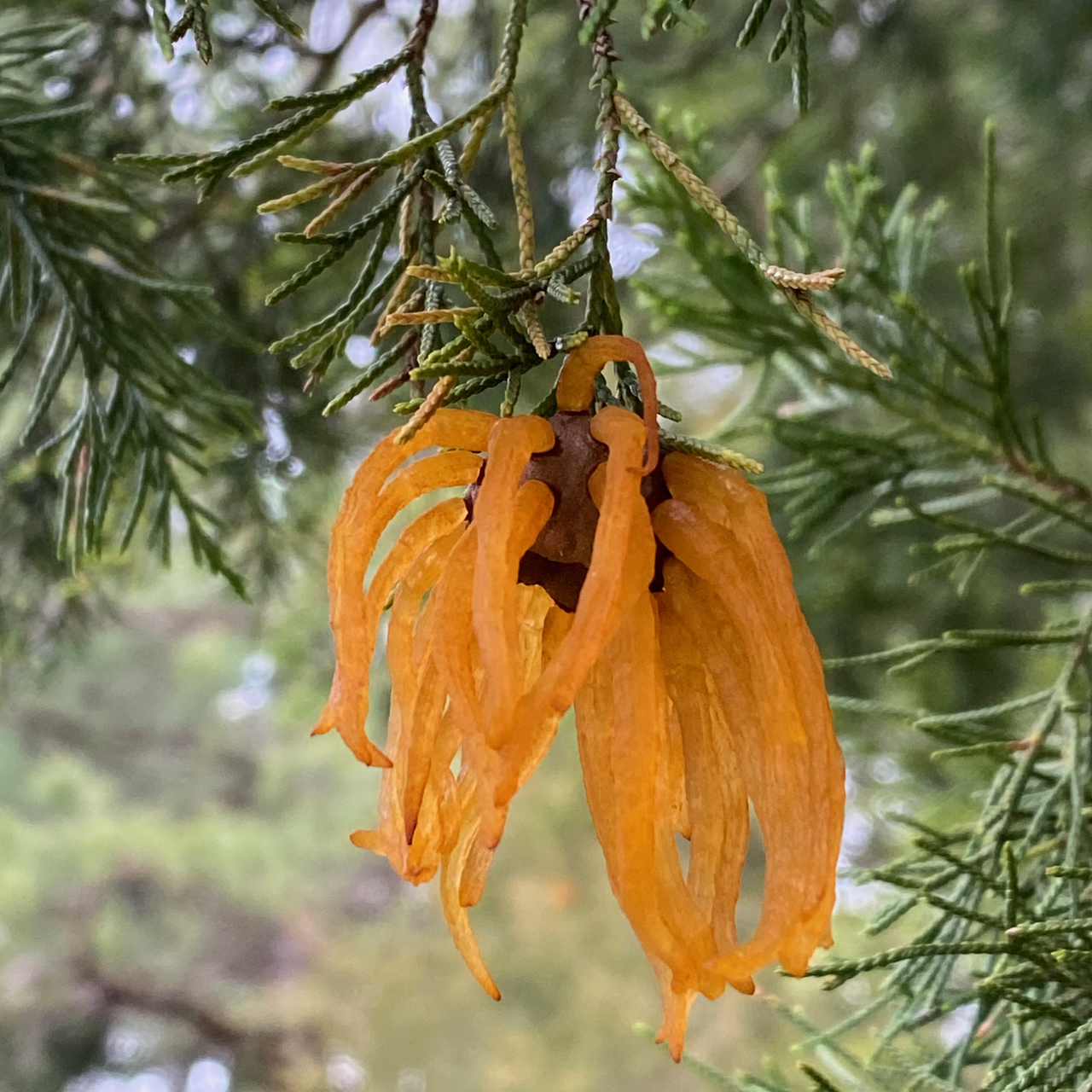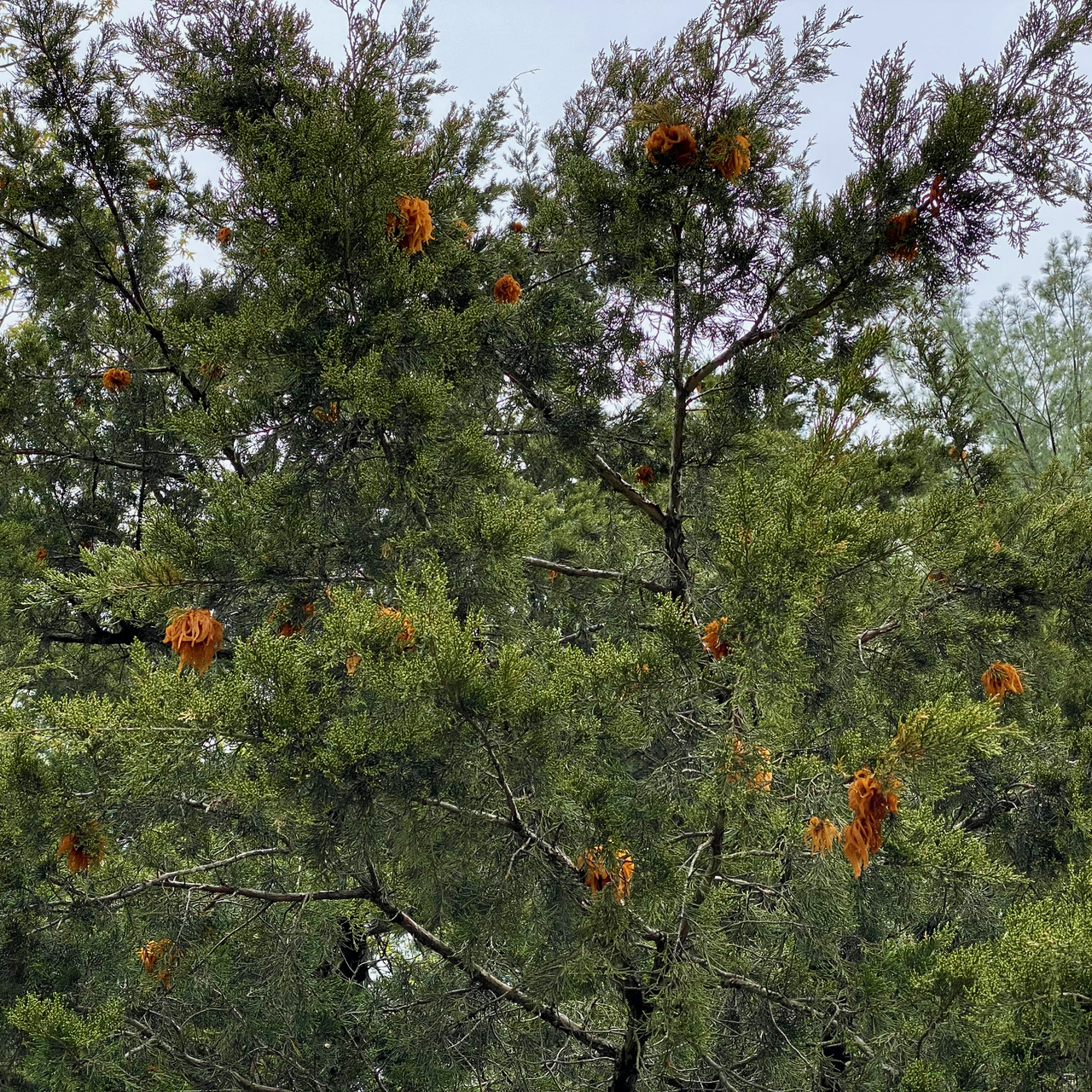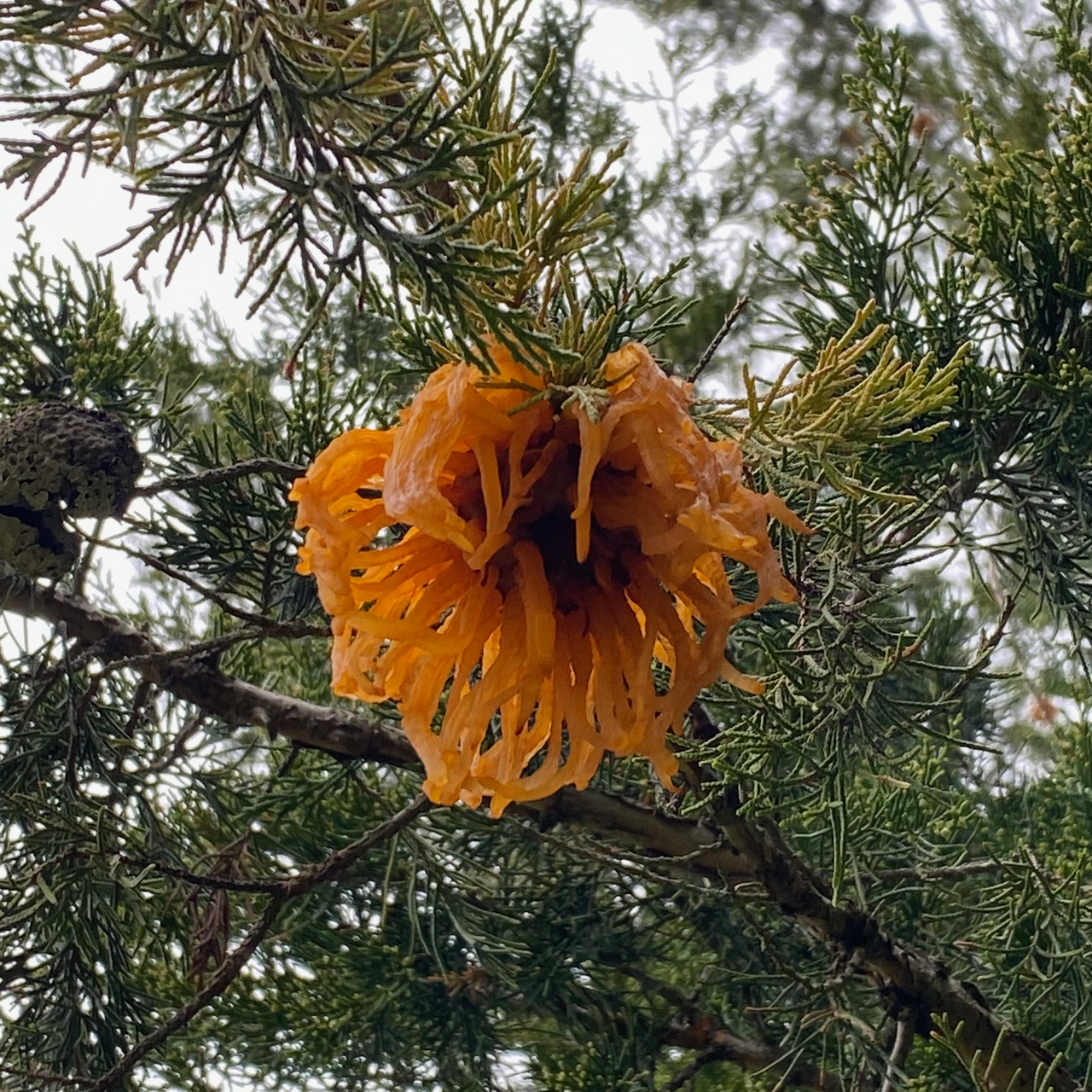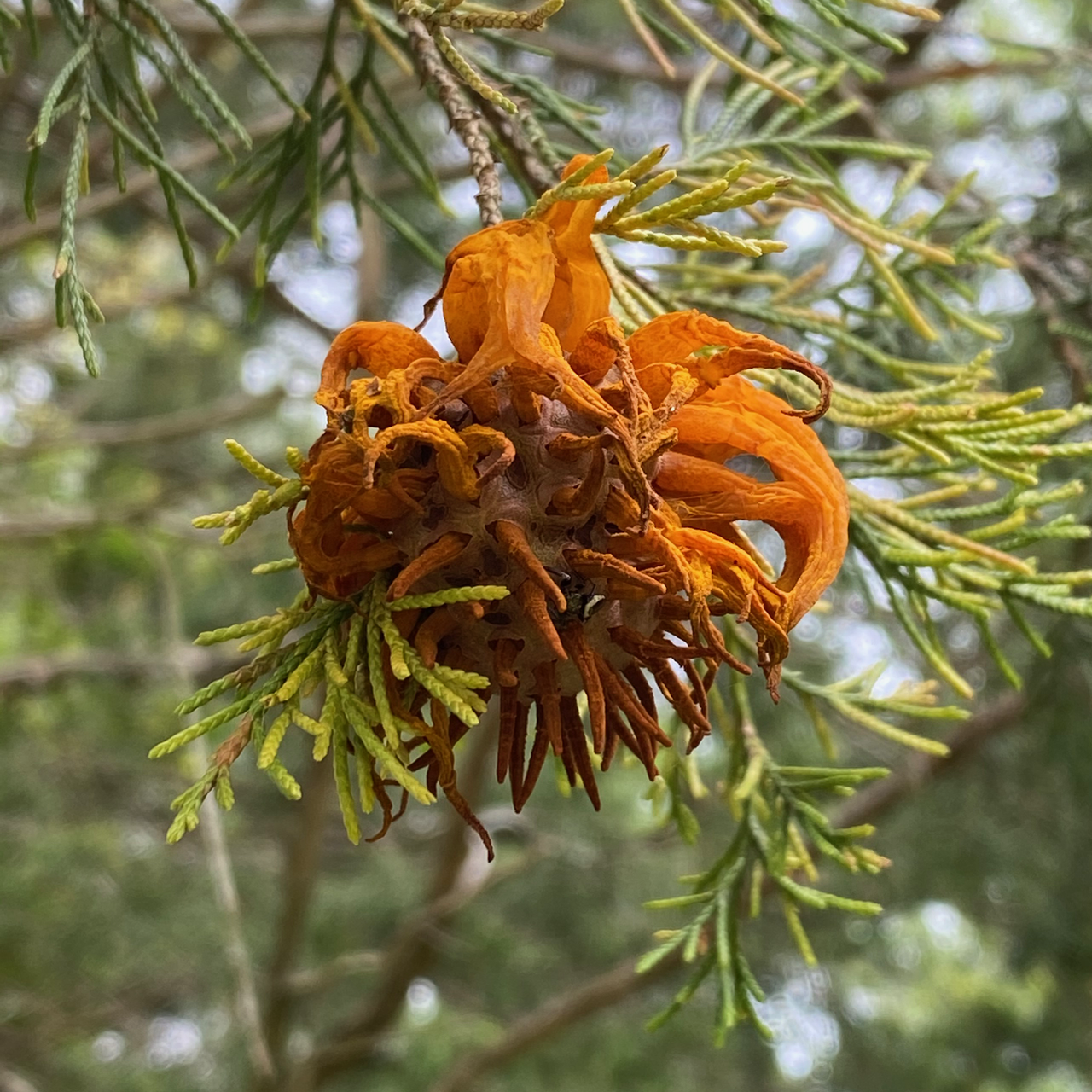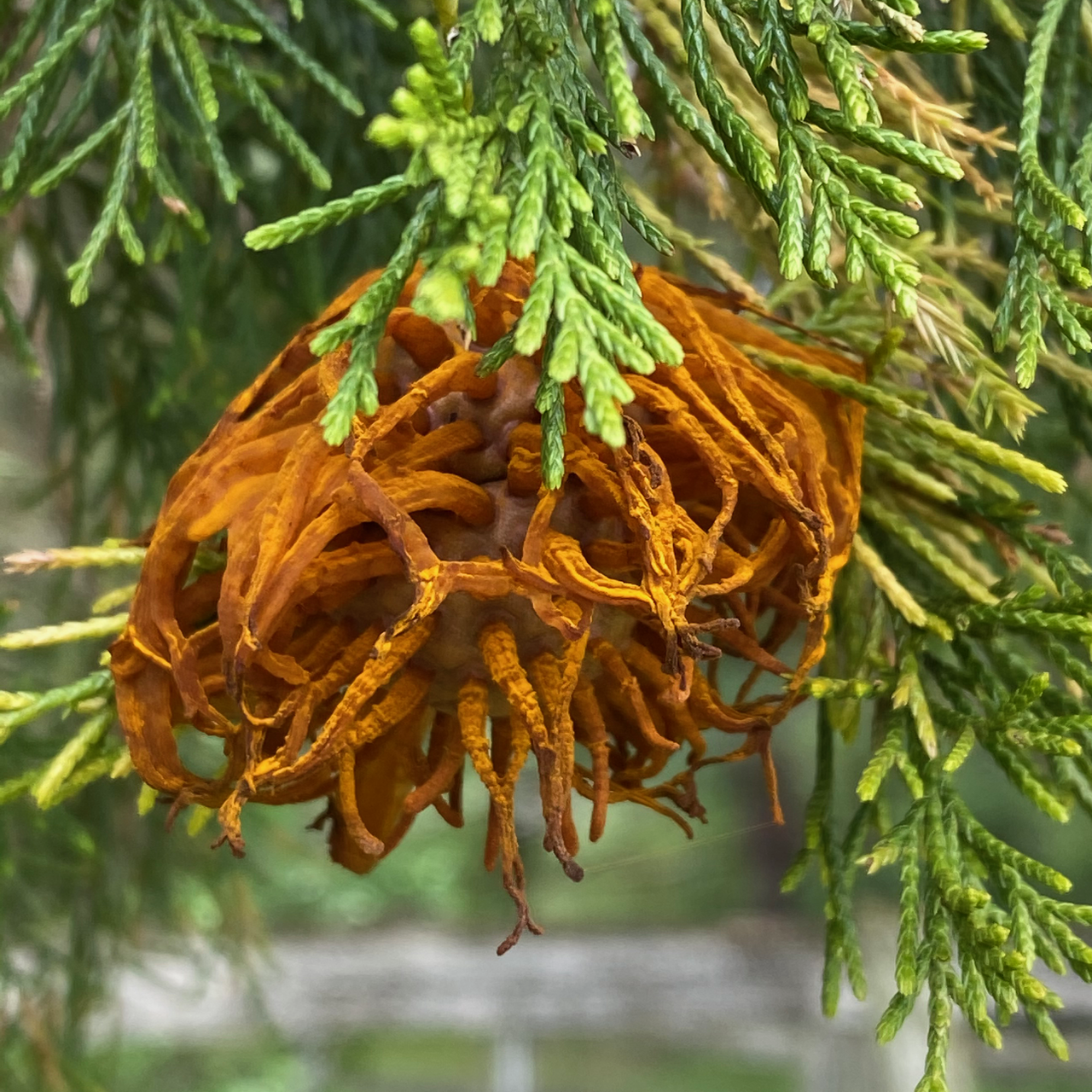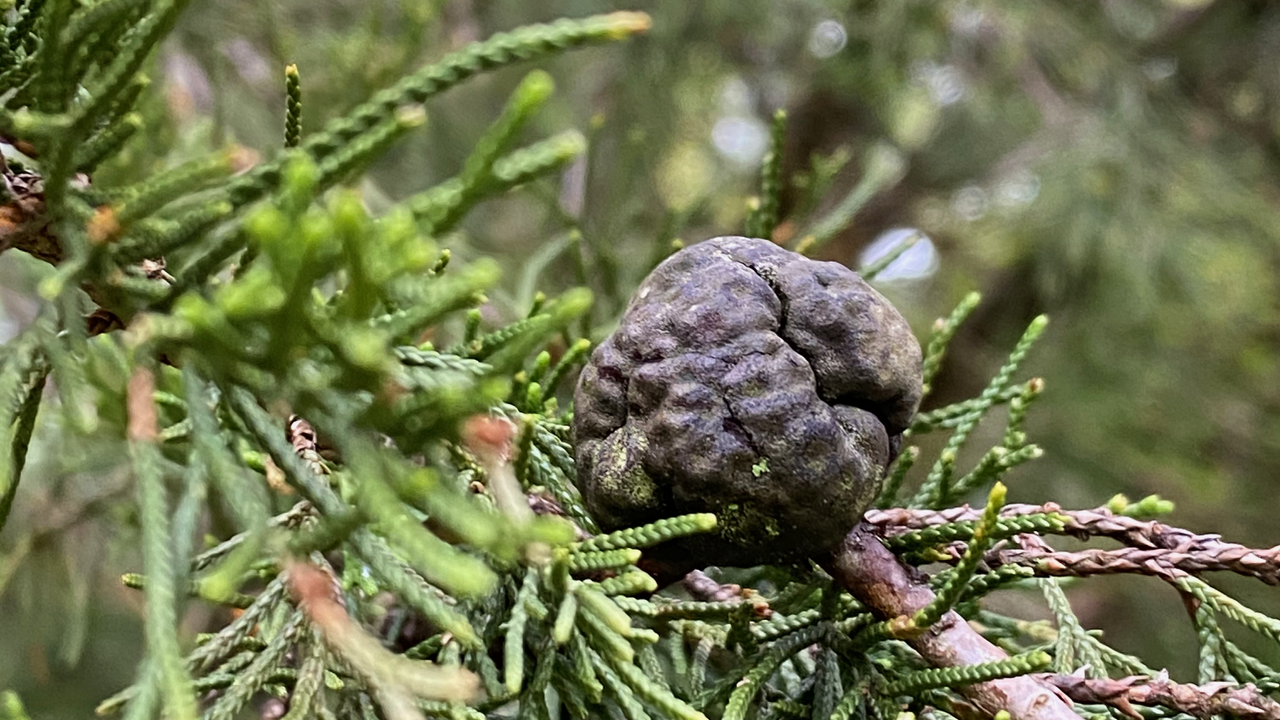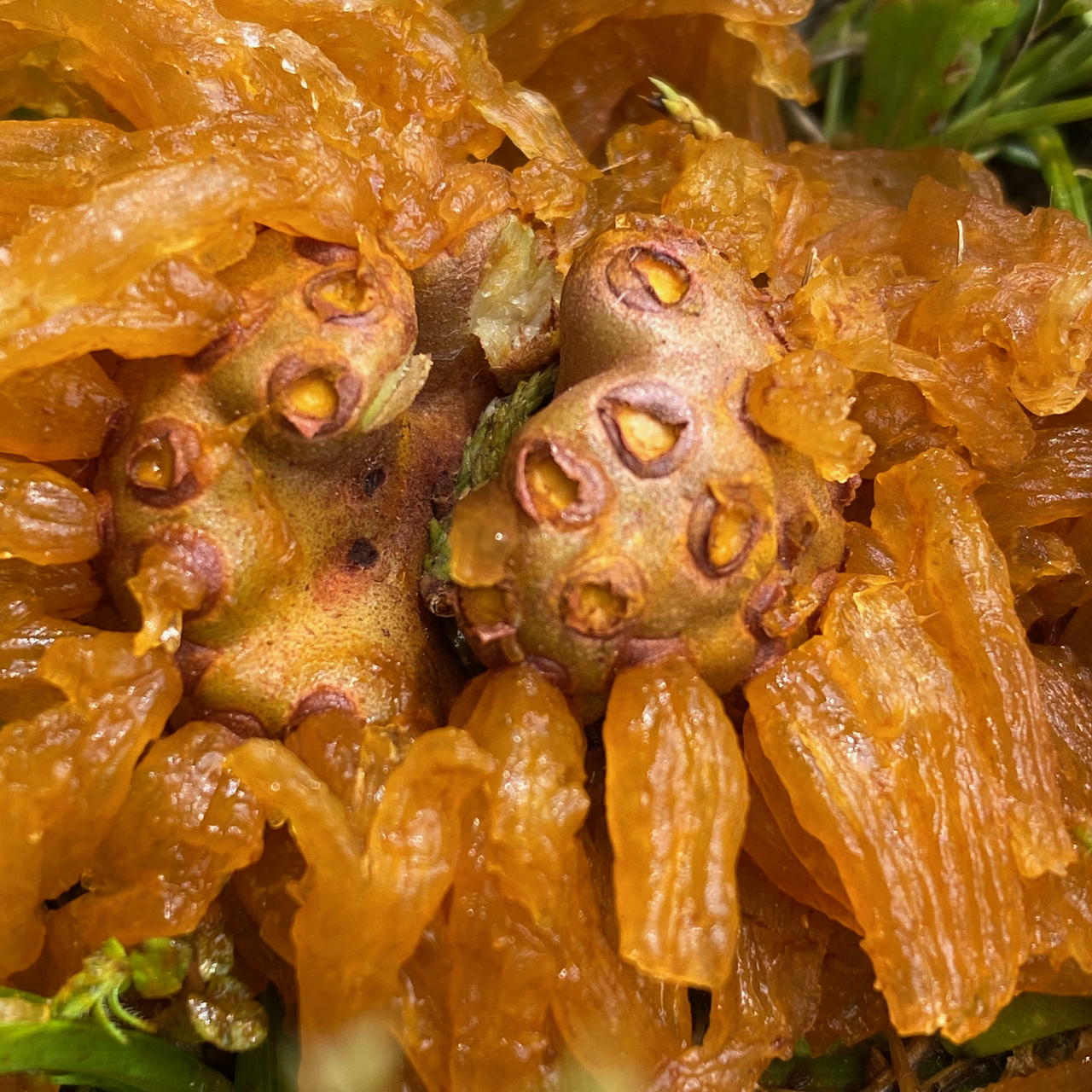Since we continue lockdown in Virginia due to COVID19, my outside travel is limited. I’ve figured out that there are still some interesting things in my backyard. One day I noticed this creepy orange fungus on a juniper. Of course I did some research. Now I know that the common name is Cedar-apple rust. As a result of some research, I realized rusts are complicated organisms. Even more exciting, this phase of the life cycle is short. I was really lucky to see it.
General Growing Characteristics of Rusts
This rust is part of a large group of fungi that all require two or more hosts to complete their life cycle. Cedar-apple rust requires 2 hosts. Seems like this probably makes the life cycle more complicated. I was right! The fungi travel between plants. As a result, they produce several different types of spores. This one produces 4. The creepy orange fungi tendrils are called teliohorns. They are like something from a horror movie. They are just so amazing. I digressed. Back to the general characteristic. One part of their life cycle is an orange, rusty color, hence the name rust. The photo is a juniper tree with numerous creepy orange fungi growing on it. They look like Christmas tree ornaments from a distance.
Phases of Creepy Orange Fungus - Cedar-Apple Rust
First of all, think of an infected apple tree. Nearby, there is a juniper. The Cedar-apple rust on the apple tree produces spores. I'll explain that cycle more at the end. They float through the air. Eventually they land on a juniper. This causes a gall. A gall is a round or globular shaped growth. They vary in size from about a pea to golf ball. They grow and mature for about a year. These galls only produce spores one time. Spring rains active galls. They produce the creepy orange fungus. The gelatinous orange tendrils are called spore horns or teliohorns. As they germinate, they dry up and form basidia. Basidia produce spores called basidiospores. These spores are released into the air. Finally, spores are blown to the other host. Apple and crabapple trees are susceptible hosts.
Cedar-Apple Rust - The Apple Phase
Next, the spores land on the apple or crabapple trees. Once they land, another complex cycle begins. First, the rust causes yellow spots on the leaves of the deciduous tree. The spots produce spermogonia. Spermogonia produce spermatia. Insects love the spermatia and its sticky gel. They carry it and help fertilization. Once fertilized, the yellow spots produce aecia on the underside of the leaf. You guessed it. The aecia produce aeciospores. Finally, these spores float back to the juniper or red cedar. As a result, the cycle begins again. Wow! Seems like a complicated process. I love fungi. There are millions of them.
References:
U.S. Forest Service - Plant of the Week, “Cedar Apple Rust (Gymnosporangium juniperi-virginianae Schwein), access 04/25/20, https://www.fs.fed.us/wildflowers/plant-of-the-week/gymnosporangium_juniperi-virginianae.shtml
The Morton Arboretum, “Cedar-apple rust”, access 04/26/2020, https://www.mortonarb.org/trees-plants/tree-and-plant-advice/help-diseases/cedar-apple-rust
Cornell University, Plant Diagnostic Disease Clinic, "Cedar-Apple Rust: Gymnosporangium juniperi-virginianae", access 04/28/20, http://plantclinic.cornell.edu/factsheets/cedarapplerust.pdf
